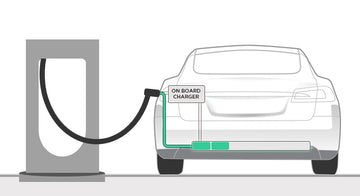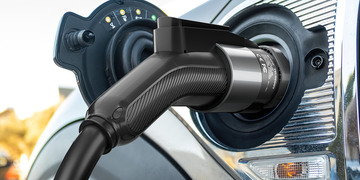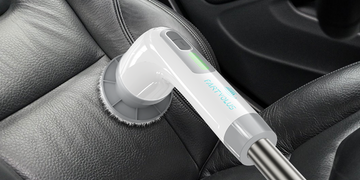As electric vehicles (EVs) become increasingly prevalent, understanding the best practices for charging EV batteries is essential for optimizing performance, ensuring longevity, and maximizing efficiency. While the convenience of EVs lies in their ability to charge at home or on the go, following some key charging practices can contribute to a smoother driving experience and a healthier battery. In this article, we'll delve into the best practices for charging EV batteries.
Charge Regularly, Avoid Deep Discharges:
Unlike some traditional batteries, EV batteries prefer regular, shallow charging cycles. Avoid letting your battery charge drop to extremely low levels regularly, as this can contribute to a reduction in overall battery life. Aim to keep your battery level between 20% and 80% for optimal performance.
Use Level 2 Chargers at Home:
Investing in a Level 2 home charging station provides a faster and more efficient charging experience compared to standard wall outlets. Level 2 chargers deliver more power, reducing the time needed to charge your EV. This is particularly beneficial for those with a daily commute, as it allows for convenient overnight charging.
Take Advantage of Off-Peak Charging Hours:
Many utility companies offer lower electricity rates during off-peak hours. By scheduling your charging sessions during these times, you not only save money but also contribute to a more stable and sustainable energy grid.
Avoid High Charging Rates Regularly:
While some EVs support fast-charging capabilities, using high charging rates consistently can generate excess heat and contribute to battery wear. Reserve fast charging for situations when you need a quick top-up, and opt for slower, more moderate charging rates for day-to-day use.
Manage Charging Sessions Using Apps:
Utilize EV charging apps to manage and monitor your charging sessions. Many apps provide real-time information on charging status, energy consumption, and even allow you to schedule charging sessions during optimal times. This not only enhances convenience but also allows you to stay connected with your EV's charging activities.
Minimize Exposure to Extreme Temperatures:
Extreme temperatures, whether too hot or too cold, can impact battery performance. Whenever possible, park your EV in shaded areas during hot weather and avoid exposing it to extremely low temperatures. Some EVs come equipped with battery preconditioning features that help optimize battery temperature before charging.

How Does EV Charging Work?
EVs use stored electricity in a battery pack to propel an electric motor, which drives the wheels. Unlike internal combustion engine (ICE) vehicles that rely on gasoline or diesel fuel, EVs rely solely on electric power.
The battery is a crucial component of an EV, responsible for storing the electricity that powers the electric motor. It is made of multiple cells connected to form a large unit, determining the car's range or how far it can travel on one charge.
Most EVs use lithium-ion batteries, similar to the ones used in laptops and smartphones. These batteries are lightweight, have a high energy density, and are rechargeable. Moreover, they are considered safe and have a long battery lifespan.
EV batteries are charged using an external power source like an electric vehicle supply equipment (EVSE).
EV charging involves converting electrical energy from the power grid into chemical energy stored in the vehicle's battery. EVs mainly use three types of charging:
Level 1 Charging: This involves plugging your EV into a standard 120-volt household outlet. Level 1 charging is the slowest method and is ideal for overnight charging.
Level 2 Charging: With a higher power output of 240 volts, Level 2 charging is faster and requires a dedicated charging station. It is suitable for daily charging at home or in public charging stations.
DC Fast Charging: This ultra-fast charging method delivers direct current (DC) to the vehicle's battery, significantly reducing charging time. DC fast chargers are commonly found along highways for quick top-ups during long trips.
EV Battery Charging Best Practices
EV batteries can last up to 200,000 miles or more, and damage or extended use may not always require battery replacement. Repairs could be possible depending on the situation. Charging your EV right can avoid costly damages and ensure long-term battery health. Following EV charging best practices can make repairs more affordable and extend battery life.
Be Mindful of Charging Speed
Whenever possible, choose slow or moderate charging speeds to minimize battery stress and extend its lifespan. Rapid charging can generate more heat, which can negatively impact the battery's health over time.
Level 1 chargers are often considered slow and may not meet the needs of drivers who rely on their EVs for daily transportation. On the other hand, Level 2 chargers offer a more suitable option for electric car batteries compared to Level 3 chargers, charging vehicles up to 8 times faster than Level 1 systems. Opting for Level 2 chargers can significantly reduce charging times and provide a more convenient charging experience.
Opting for gentler charging rates allows you to extend EV battery life and promote the overall performance of your electric vehicle.
Avoid Extremes During Discharging Too
Just as it is advisable to avoid extreme states of charge during charging, it is equally important to refrain from regularly fully discharging your battery. Keeping your battery charge away from the lower and upper limits of its capacity can help maintain its health and prolong its lifespan. Aim to maintain your EV battery within the recommended charge range to ensure optimal performance and longevity.
By incorporating these EV battery charging best practices into your routine, you can enhance the overall performance and longevity of your electric vehicle. From optimizing charging times to managing temperatures, these practices contribute to a seamless driving experience and a healthier battery, ensuring that your EV remains a reliable and efficient mode of transportation for years to come.





